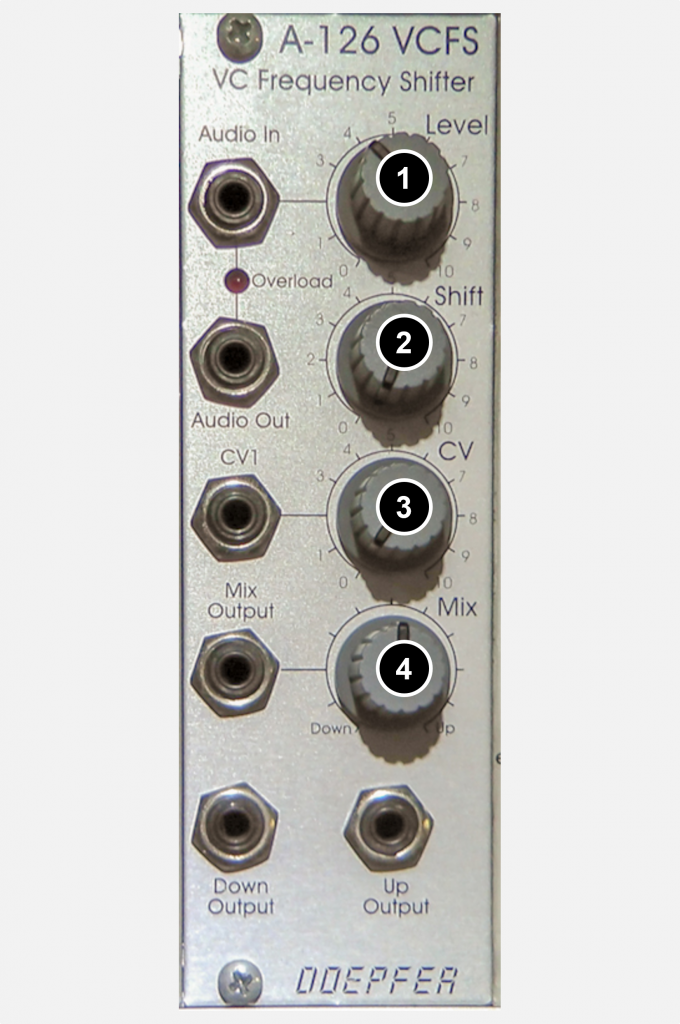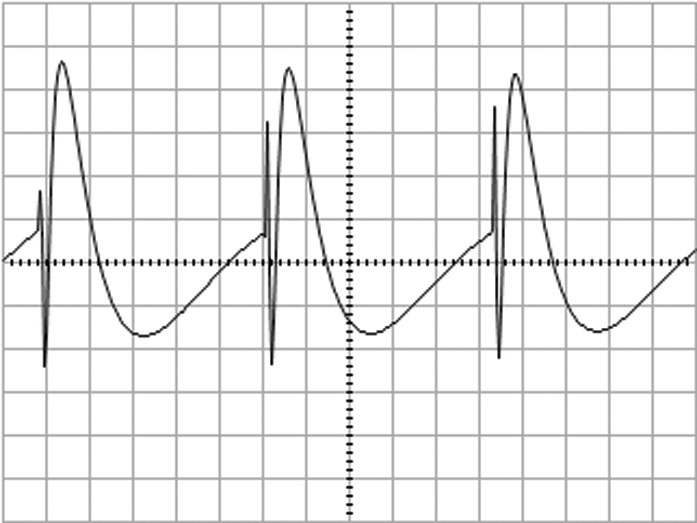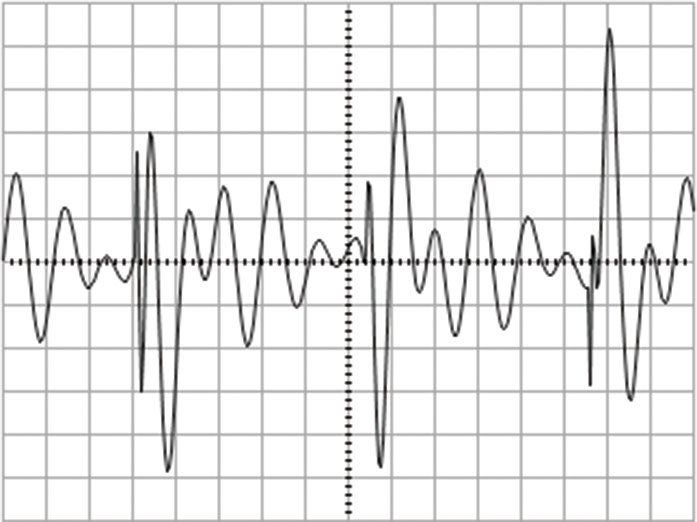The module is no longer in production.
Unfortunately, the VC Frequency Shifter is no longer available because one of the components used is no longer manufactured. In principle, however, the task of the missing component could be taken over by an A-143-9 Quadrature LFO or an A-110-4 Quadrature Thru Zero VCO, so that this particular module could theoretically be produced again in a modified form (unfortunately, used A-126 modules are rare).
With the A-126-2, a very extensively equipped successor has been on the market since the beginning of 2022, for which there is even an “expansion” module with additional outputs.
What does a frequency shifter do? It can shift the frequencies of all partial tones of a sound (these are the individual sine waves that make up a sawtooth, for example) by a specific frequency (between approx. 50 Hz and 4 kHz) up or down. This may drastically change the relationship between these partials! For example, the first overtone of a harmonic series of partials has twice the frequency of the fundamental, which would then be 880 Hz for a fundamental of 440 Hz. That is the distance of exactly one octave. If both are now shifted up by 100 Hz, then we get 980 Hz and 540 Hz – and thus no longer have an octave distance! The sound changes a lot and is usually perceived as “metallic”, similar to a ring modulator, but more finely adjustable.
User interface
Inputs:

- Audio In: Audio input.
- CV1: Input for control voltages to control the frequency shift. The total amount of frequency shift is determined by the control voltage and the position of the “Shift” control.
Outputs:

- Audio Out: The audio input signal is present at this output without further processing, only adjusted in level by the “Level” attenuator.
- Mix Output: Audio output with a mix of the upshifted and downshifted audio signal. The mixing ratio can be adjusted with the “Mix” controller.
- Down Output: Audio output to which only the down-shifted audio signal is output.
- Up Output: Audio output to which only the up-shifted audio signal is output.
Controls:

- Level: Attenuator for the level of the audio input signal. Overloading is indicated by a red “Overload” LED.
- Shift: Manual controller for the amount of frequency shifting.
- CV: Attenuator for the control voltage input “CV”.
- Mix: Controller for determining the mixing ratio of the audio signal that has been shifted down or up at the “Mix Output” output.
Metallic stuff, fine tuned
Due to the (mostly) non-harmonic overtones, the Frequency Shifter can produce a wide range of metallic sounds and is also well suited for alienating “natural” audio material. The separate outputs for “Down Output” and “Up Output” allow additional variants of sound processing.

Controlling via the Quadrature LFO (modification)
The module can be modified so that an A-143-9 can be connected instead of the internal quadrature LFO: The A-143-9 QLFO can generate significantly lower frequencies (and thus smaller frequency shifts with the A-126) than the built-in QLFO. Very nice tremolo-like beats are possible with this.

Sound examples
-
A-126 / Frequency Shifter
Some of the sound samples use the modification mentioned above to insert external (very low frequency) sine/cosine modulation sources. We always hear the pure “down” output on the left stereo channel, and the “up” output on the right.
A sawtooth from an A-110 VCO, internal modulation. Same sawtooth, this time modulated by a slow A-143-9 Quadrature LFO. Here a sine wave from an A-110-1 to avoid side effects caused by shifting the overtones. You can clearly hear that the frequency of the left channel increases again after passing through a “zero point”. The modulation is again done by an A-143-9. Another sawtooth from the A-110-1, this time not modulated by a sine/cosine, but by the trapezoid and the 90 degree phase-shifted trapezoid of an A-110-6. The sawtooth again, here modulated by the square outputs (original and 90 degrees out of phase) of an A-110-6. You can hear clear clicks as noise due to the hard rising flanks of the modulation sources. Noise (here white noise from an A-118-1) can also be interestingly processed in the Frequency Shifter (internal modulation source of the A-126).
Technical specifications
| Width | 8 HP |
| Depth | 105 mm |
| Power requirements | 80 mA (+12V) / -50 mA (-12V) |
